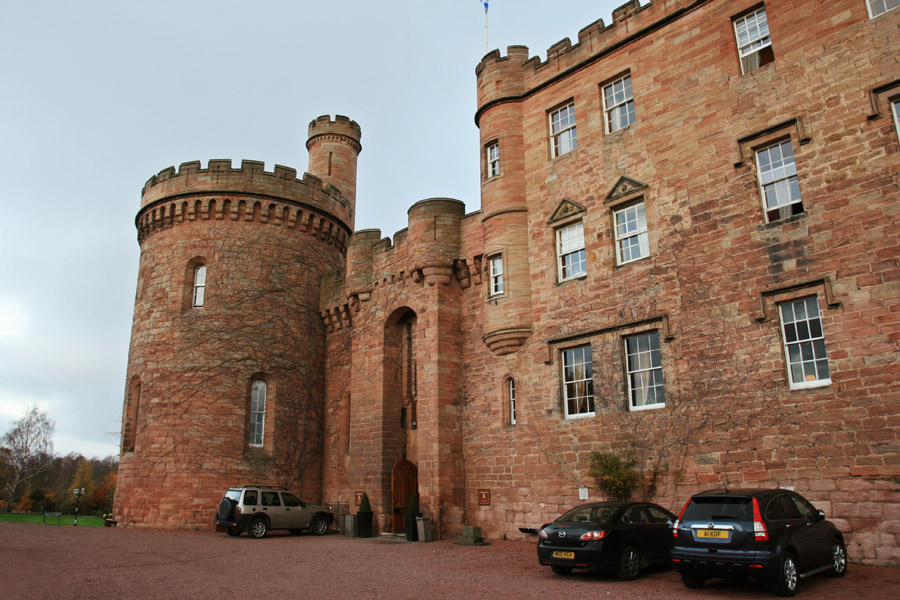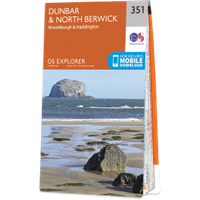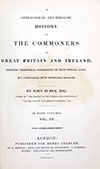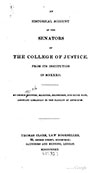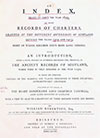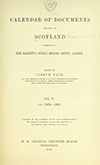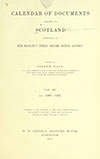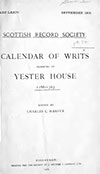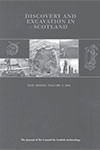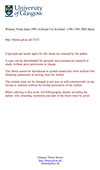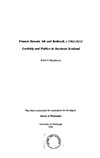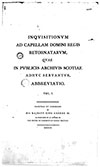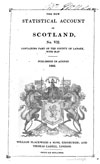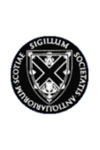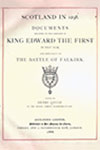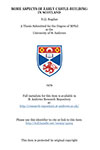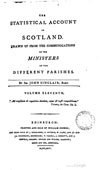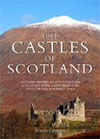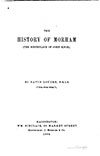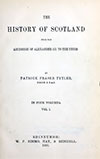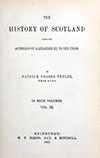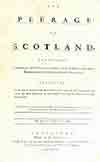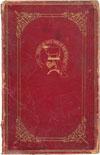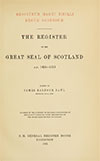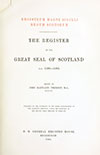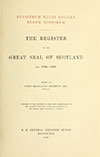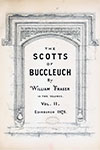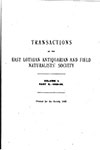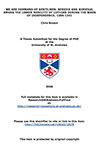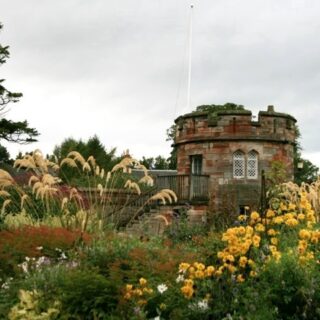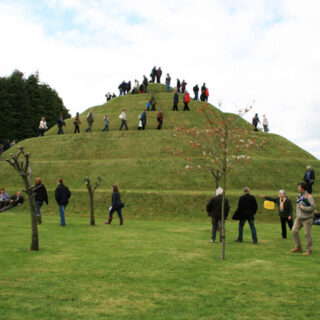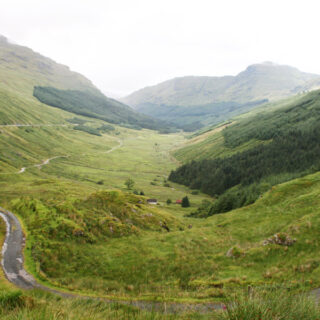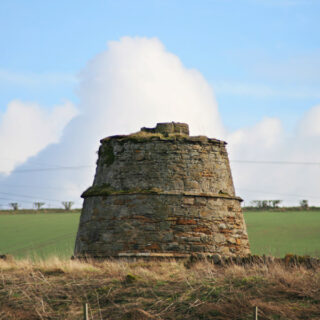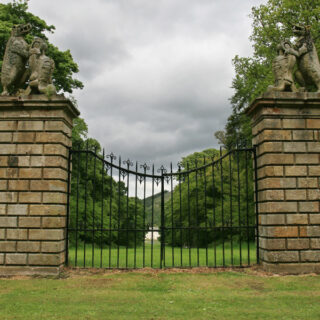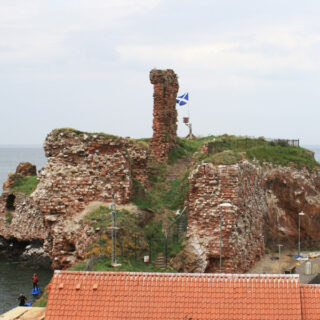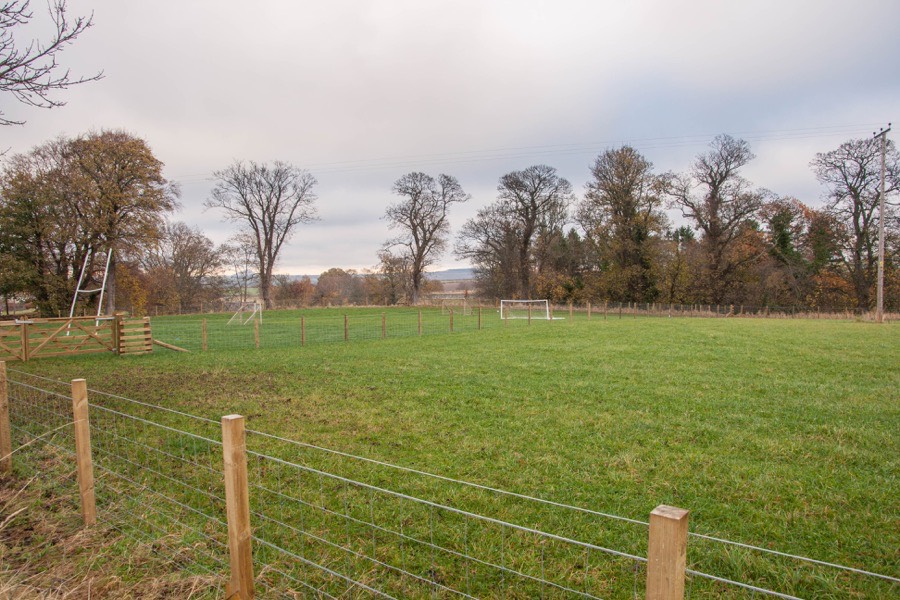

Morham Castle was an important castle belonging to the Malherbe or Morham family from the 12th century however nothing of it remains above ground.
In the 12th century Thomas Malherbe was granted the lands of Morham, and from the early 13th century time the Malherbes sometimes used the name “de Morham”. Thomas was married to Ela de St Martin, daughter of Alexander de St Martin, the Sheriff of Haddington, and may have been responsible for building the first castle. What form it took is unknown however it was probably built from wood and may have stood on a motte. The site is at the east end of a plateau named Morham Braes which overlooks the Morham Burn to the east. To the north and south of the site the burn turns west, encircling a wide area and offering some protection on three sides.
Thomas was succeeded by his son, John, who married Ada de Colville and had at least two sons, John and Adam. John married Ada Lockhart, daughter of Malcolm Lockhart, and succeeded his father but predeceased his brother. Alan of Morham and Gilbert of Morham are both on record around 1230. Some time between 1235 and 1246 Sir Adam de Morham of Stanhus granted the mill of Stenhouse to Newbattle Abbey. The charter stated that the noblewoman Euphemia held a third part of the mill as her dowerland.
In 1255 Sir Adam’s son, Thomas de Morham, was born in the castle. He married Euphemia Stewart and in the second half of the 13th century he confirmed grants and permissions made by his father, grandfather and great-grandfather to Newbattle Abbey. Some time between 1250 and 1267 Sir Adam granted a wood beside Yester Castle to Sir Hugh Gifford and allowed him to build a dyke to mark the boundary of the castle’s parkland. Thomas and Euphemia had two sons, Herbert and Thomas, and a daughter, Eupheme or Euphemia Morham who was born in Morham in 1287 and would marry Sir John Gifford of Yester in 1304.
On the 29th of June 1294 Edward I of England summoned the elder Thomas de Morham and others to appear before him in London on the 1st of September. In 1296 he fought with William Wallace against Patrick de Dunbar, Earl of March, near Innerwick. His son, Herbert, was taken prisoner at the Battle of Dunbar on the 27th of April 1296 and was transported to England where he was imprisoned in Rockingham Castle.
In the middle of July that year Sir Thomas, the elder, was described as Edward’s enemy and summoned before the King at Aberdeen. He may have been pardoned however as Thomas de Morham performed fealty to Edward I at Berwick-upon-Tweed on the 28th of August although it’s possible that this may have been his other son, the younger Thomas de Morham performed fealty to Edward I at Berwick-upon-Tweed. Gilbert Malherbe also performed fealty at the same time. The younger Thomas fought against Wallace at the Battle of Falkirk in 1298 and was later compensated by Edward for the loss of his black horse during the fighting.
Herbert was released the following year on condition that he went into exile in France however in 1299 he was accused of abducting Edward’s daughter, Joan de Clare, between Stirling and Edinburgh while she was under safe passage from her father. He took the Countess to his brother Thomas’ house of Gertranky and imprisoned her there following her rejection of his proposal of marriage, robbing her of horses, jewellery, clothing and goods to the value of £2000. Later that year he led the Scots who captured Stirling Castle.
In September 1301 Robert de Tilliol, keeper of Lochmaben Castle, wrote to Edward I to inform him that Sir Herbert de Morham, by then a wanted man, was residing at Stanhouses (also known as Stenhouse) along with Sir Simon Fraser and Sir Alexander of Abernethy. Sir Herbert was evidently taken prisoner some time after this as in 1304 Edward I wrote to the Sheriff of Lanark to inform him that all prisoners were to be released apart from Sir Herbert and his father.
Sir Herbert was executed in 1306 however his father would remained incarcerated for another eight years. The younger Sir Thomas was granted the manor of Boulton in Cumberland in England in October 1314 for his good service, it having been taken from Sir Roger de Moubray of Barnbougle as a result of the latter switching his support to the Scottish side after the Battle of Bannockburn. In November of the same year the elder Sir Thomas was released from the Tower of London by Edward II in exchange for John Segrave, 2nd Baron Segrave, who had been captured following the Battle of Bannockburn. Sir Thomas resigned the barony of Kimmerghame to Sir Alexander Stewart of Bonkyll in 1316. In 1320 he was one of the barons whose seal was attached to the Declaration of Arbroath.
In 1322 Robert the Bruce granted Sir Thomas senior all the lands and holdings in the barony of Dunipace, that Sir Thomas Randolph had resigned, along with lands and holdings in the baronies of Duncanlaw and Morham. These were to pass to Sir John Gifford of Yester and Euphemia Morham upon Thomas’ death. The elder Sir Thomas died some time before the middle of August 1327.
The Knights Templar held some land within the barony of Morham however upon their demise early in the 14th century their “two Temple-lands” passed to Sir Robert Lauder of The Bass whose family held them until the 17th century when they were incorporated into the barony of Drem.
Sir John Gifford died around 1345 and was succeeded by his son, Sir Hugh Gifford, who married Johanna Douglas and had four daughters, Janet or Johanna, Mary or Agnes, Euphemia and Alice or Alicia. Sir Hugh died in 1366 and his daughters became co-heiresses while still children. At this time Morham was divided into four parts.
Johanna married Sir Thomas Hay, of Locherworth, Agnes married Eustace Maxwell of Tealing, a younger son of Sir William Maxwell of Caerlaverock, Euphemia married Dougal MacDowall of Makerstoun around 1390, and Alice married Sir Thomas Boyd of Kilmarnock.
In 1409 Euphemia resigned her share of Yester, Duncanlaw and Morham to their son, Dougal or Dungall MacDowall of Makerstoun. Eustace Maxwell exchanged his wife’s share of her inheritance with Dougal MacDowall for part of the lands of Tealing in 1427.
Dungall MacDowall resigned his share of Yester, Duncanlaw and Morham to his son, Duncan MacDowall, in 1440. Duncan was married to Elizabeth Hay, daughter of Sir William Hay, of Locherworth and Yester.
In 1450 John Lindsay of Dunrod petitioned James II with the claim that his ancestors had held the “Lyndesayis landis” which were part of the lands of Morham. An investigation by Thomas de Cranstoune, Justiciar of the King, with John de Borthwic as prolocutor, found in his favour and Edmund Hay of Tallo was ordered to surrender the tower and lands to Lindsay. Later Lindsay accused Edmund Hay and his brother, Sir David Hay of Yester, of trying to dispossess him of the lands.
Robert Boyd of Kilmarnock, son of Sir Thomas and Alice Gifford, granted the quarter parts of the baronies of Yester, Duncanlaw and Morham to Sir David Hay of Yester in 1451. The following year Alexander Lindsay, son and heir of John Lindsay, was ordered to resign the lands of Morham to his superior, Sir David Hay of Yester.
Sir David and Edmund were before parliament again in 1461, after the ascension of James III to the throne, this time seemingly in dispute with one another. It would appear that Edmund laid claim to the “thre akaris of the thynnis of Morehame and about it, apoune the quhilkis the touris and house of Morehame is biggyt” (three acres of the “thynnis” of Morham and around it, upon which the tower and house of Morham is built). The Lords apparently ruled in Edmund’s favour as the lands of Morham, except for the three acres, were let to Sir David.
In 1463 William Maxwell of Tealing and Polgavy, grandson of Eustace Maxwell and Agnes Gifford, granted Dungall MacDowall of Makerstoun his share of Yester, Duncanlaw and Morham in exchange for a quarter part of Tealing and Polgavy.
By this time the west half of the lands and barony of Morham were held by the Hays of Yester and the east half by the MacDowalls of Makerstoun, with the two families being related by marriage. In 1474 David Hay of Locherworth pursued legal action against Dougal MacDowall of Makerstoun, his sister Elizabeth’s son, who had illegally occupied the castle for the past two years.
MacDowall was the father of Andrew MacDowall of Makerstoun who married Eupheme or Euphemia Hepburn, daughter of Sir Patrick Hepburn of Dunsyre, 1st Lord Hailes, and in 1477 she was granted the half lands of Yester, Duncanlaw and Morham in liferent.
The judges decreed that Dougal MacDowall should return the castle to Sir William Hay of Morham and that Sir William would hand over the lands of Linplum, Baro and Duncanlaw.
Andrew MacDowall granted one third of the lands of Morham to William Sinclair (possibly Sir William Sinclair, 2nd Lord Sinclair) in 1484 and in 1490 he granted half of the baronies of Yester, Duncanslaw and Morham to Patrick Hepburn, 2nd Lord Hailes. On the 10th of November 1512 Patrick’s son, Adam Hepburn, 2nd Earl of Bothwell, gave John Hay of Yester the quarter lands of Duncanlaw, the half-lands of Yester and the patronage of Bothans church, receiving the Hays’ half of Morham, Plewlands and the patronage of Morham church in return. Four days later Bothwell sold Morham to his uncle, Adam Hepburn of Crags, in order to pay off some of his debts.
In 1533 or 1534 Patrick Hepburn, 3rd Earl of Bothwell, married Agnes Sinclair, daughter of Henry Sinclair, 3rd Lord Sinclair, however they divorced in 1543 and she was granted a charter of the lands of Morham as part of the settlement. A month after the divorce he paid £2000 and received Morham back. The 3rd Earl died in 1556 and was succeeded by their son, James Hepburn, 4th Earl of Bothwell, who in 1567 abducted and married Mary, Queen of Scots. The 4th Earl was forfeited in 1569 for his involvement in the murder of Henry Stuart, Lord Darnley, in 1567.
Lady Morham lived in the castle until her death in 1572 and in October 1573 a tack of the lands and barony of Morham, together with various other lands in the parish, was made to her daughter Jean Hepburn, Mistress of Caithness. Jean’s third husband was Archibald Douglas, Parson of Douglas, who was also involved in the murder of Darnley. In 1580 Douglas escaped from the castle at Morham just prior to his intended arrest by Alexander Home of Manderston, having been warned by his kinsman George Douglas of Longniddry.
In 1581 James VI granted numerous possessions including Crichton, Hailes and Morham, with tower and mill, to his cousin, Francis Stewart, 5th Earl of Bothwell. Francis had been born in Morham Castle in 1562 and was the maternal nephew of the 4th Earl. The 5th Earl had married Margaret Douglas, daughter of David Douglas, 7th Earl of Angus, and widow of Walter Scott, 4th Baron of Buccleuch, in 1577.
The 5th Earl fell out favour with the King in the second half of the 1580s and was accused of treason in 1589. He was found guilty but sentence was deferred however in April 1591 he was arrested for trying to arrange the King’s death through the practice of witchcraft and imprisoned in Edinburgh Castle. On the 22nd of June he escaped from the castle and three days later was proclaimed an outlaw. On the 26th of June Morham was granted to Ludovic Stewart, 2nd Duke of Lennox and the King’s second cousin.
In July 1591 the English ambassador Robert Bowes wrote that the 5th Earl “lay in bed” once or twice at Morham with Sir William Keith of Delny. On the 6th of March 1592 the King’s messenger, William Forsyth, visited Morham Castle and affixed a notice to the gate charging its occupant, Hercules Stewart of Whitelaw, Bothwell’s half-brother, with treason. Four days later Forsyth did the same to the 5th Earl of Bothwell and his wife, Margaret Douglas, affixing a notice to the gate of their house in Kelso. The 5th Earl was summoned for treason in May that year along with many others.
On the 28th of June 1592 Bothwell led a party of 300 men in an unsuccessful attempt to kidnap the King from Falkland Palace. James VI sent Sir John Carmichael and James Sandilands to Morham to arrest Bothwell for his involvement in the plot however they were unsuccessful in their endeavours, arresting a servant and confiscating a horse. On the 31st of March 1593 the King’s messenger, William Porteous, affixed another notice to the gate of Morham Castle again accusing the 5th Earl of treason. Bothwell was forfeited in July 1593.
The 5th Earl was finally forfeited in July 1593 and Morham was granted to his half-brother, Walter Scott of Branxholm and Buccleuch, later 1st Lord Scott of Buccleuch, in October 1594. Lord Scott died in 1611 and was succeeded by his son, also Walter Scott, who in 1619 was created 1st Earl of Buccleuch and Baron Scott of Whitchester and Eskdaill.
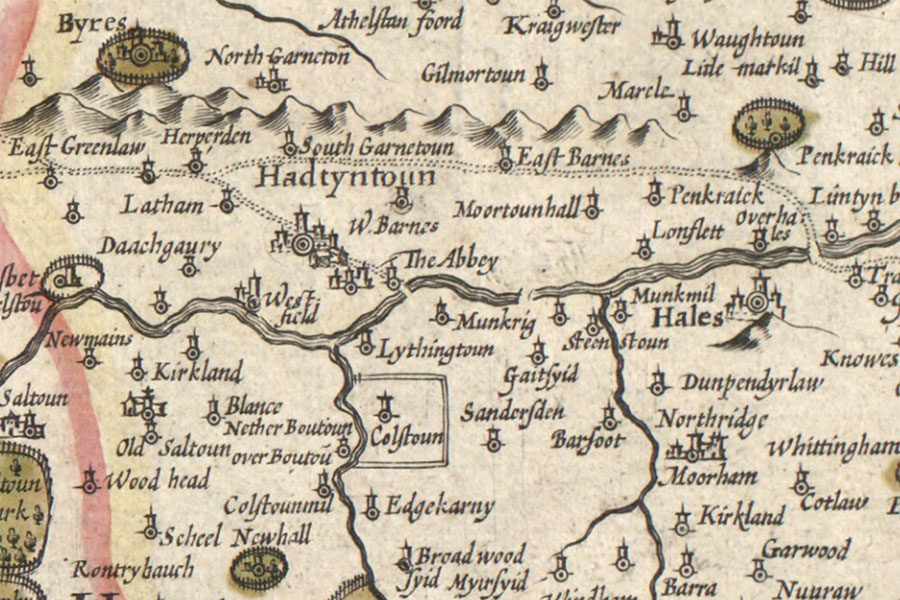
Hendrik Hondius, Amsterdam, 1630map image courtesy of NLS
The 1st Earl died in 1633 and the lands of Morham were mentioned in his will, passing to his son, Francis Scott, 2nd Earl of Buccleuch. The subsequent fate of Morham is not clear however the Hepburns seem to have retained some lands within the barony. In 1659 Patrick Hepburn of Smeaton was served heir to his father, John Hepburn of Smeaton, in the lands of Mainshill in Morham and in 1667 the proprietors of the parish of Morham were noted as being Esther Hepburn, Lady Bearford, Alexander Seton, 1st Viscount of Kingston, Patrick Hepburn of Beanston and James Cockburn. By 1685 James Donaldson, son of the London merchant John Donaldson, was in possession of the land and barony of Morham.
Around 1700 Sir David Dalrymple, an advocate and politician, bought Hailes and may have bought the western part of Morham at a similar time. He was created 1st Baronet of Hailes in 1701. The Dalrymples of Hailes rebuilt the church and built the Dalrymple Aisle where several of them were buried.
Nothing of the castle was visible by 1792 although there were apparently locals “alive who remember the remains of it, and speak of it as a large extensive structure”. In the same year Francis Charteris, 7th Earl of Wemyss, received a sasine of the eastern half of the barony of Morham and its lands.
Two fragments of tiles decorated with fleur-de-lys in relief were found in the Morham Burn in the early 20th century and sent to the National Museum of Scotland. Similar tiles have also been found at Crichton Castle and Dirleton Castle.
In June 2013 the Edinburgh Archaeological Field Society carried out a geophysical survey for East Lothian Council Archaeology Service in order to try to establish the location of the castle. The survey identified several anomalies in the search area within a roughly circular feature around 39m in diameter. A second survey was carried out in March 2014 to the south of the previous search area however this yielded more ambiguous results which were interpreted as possible later features unrelated to the castle.
At the end of August 2019 an archaeological investigation was carried out with seven trenches cut as part of the “Whiteadder: Historic Heart of the Lammermuirs” project.
In one trench the foundations of a wall some 2.0m thick were found, with a form suggesting that it was part of a round tower or stair tower. Finds recovered from the rubble and mortar layer suggested an occupation period stretching from the 12th to the 18th centuries.
Alternative names for Morham Castle
Moirhame; Moorham; Moram; Morame; Morham Tower; Morehame; Morham Braes; Morhame; Morphame; Morum
